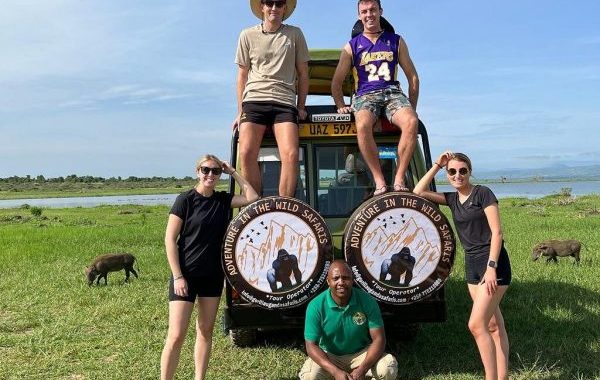Embarking on a gorilla trekking adventure in Uganda offers an unparalleled opportunity to witness the…
How many mountain gorillas are in Bwindi Impenetrable National Park?
How many mountain gorillas are in Bwindi Impenetrable National Park? As of the most recent estimates in 2023, Bwindi Impenetrable National Park in Uganda is home to approximately over 600 mountain gorillas, making it one of the most important habitats for this critically endangered species. This population represents about half of the world’s total mountain gorilla population, which is currently estimated to be just over 1,000 individuals in the wild.

More Detailed Breakdown:
-
Total Gorilla Population in Bwindi:
- Bwindi Impenetrable National Park is home to about 22 habituated gorilla families. These families are the groups that have been acclimatized to human presence and are available for eco-tourism trekking. In addition to the habituated groups, there are other unhabituated groups that are observed but not accessible to tourists.
-
Conservation Success:
- The population of mountain gorillas in Bwindi has been steadily increasing due to successful conservation efforts, particularly since the 1990s. These efforts include:
- Anti-poaching measures.
- Habitat protection and restoration.
- Support for local communities through eco-tourism.
- Regular monitoring of gorilla health and behavior.
- The population of mountain gorillas in Bwindi has been steadily increasing due to successful conservation efforts, particularly since the 1990s. These efforts include:
-
Mountain Gorilla Population Trends:
- The mountain gorilla population in Bwindi has grown from a mere 300 individuals in the early 1990s. This increase is a direct result of sustained conservation programs, community involvement, and careful management of both the gorillas and their habitat.
-
Bwindi’s Role in the Global Gorilla Population:
- While Bwindi is one of the two main strongholds for mountain gorillas (the other being the Virunga Massif, which spans parts of Uganda, Rwanda, and the Democratic Republic of Congo), it remains one of the most significant areas for the species. The population in Bwindi accounts for about 46-50% of the global population of mountain gorillas.
-
Current Efforts in Bwindi:
- The Gorilla Doctors and other veterinary programs monitor the health of the gorillas.
- Tourism (specifically gorilla trekking) helps fund conservation efforts and community projects. The revenue from gorilla tourism is critical for park management and local community development, reducing human-wildlife conflict and providing employment opportunities.
Key Habitats and Regions in Bwindi:
Bwindi Impenetrable National Park covers about 331 square kilometers and is divided into several areas that are crucial to gorilla survival:
- The southern sector (Nkuringo and rushaga sector) has a large concentration of gorilla families, and it has become increasingly popular for trekking.
- The northern sector (Ruhija) also hosts several habituated families and is known for its biodiversity.
- The central sector (Buhoma) is the most visited area and where many of the park’s tourism activities take place.
Conservation Challenges:
Despite these successes, mountain gorillas in Bwindi still face ongoing challenges:
- Habitat loss due to human encroachment and agricultural activities.
- Poaching for bushmeat or for the illegal pet trade (though this is less of a problem now, thanks to strong law enforcement).
- Disease transmission from humans to gorillas, particularly respiratory infections, which remains a major concern.
- Climate change, which can affect the availability of food and the distribution of habitat.
The Future of Bwindi’s Gorilla Population:
As of now, the future of Bwindi’s gorilla population looks promising, but continued conservation efforts and careful management are essential to sustaining this positive trajectory. With global attention on the success of gorilla tourism and conservation in Uganda, it is hoped that this model can continue to benefit the gorillas, the park, and local communities.
In summary, Bwindi Impenetrable National Park is home to approximately 600-660 mountain gorillas, making it one of the most important refuges for this critically endangered species. The park’s success story is an example of what can be achieved when local communities, tourism, and conservation organizations work together toward protecting endangered species.



